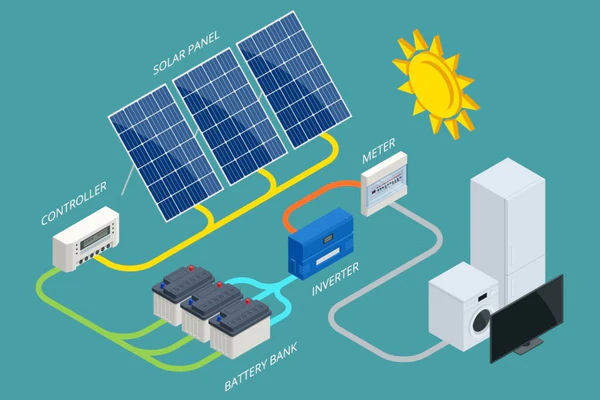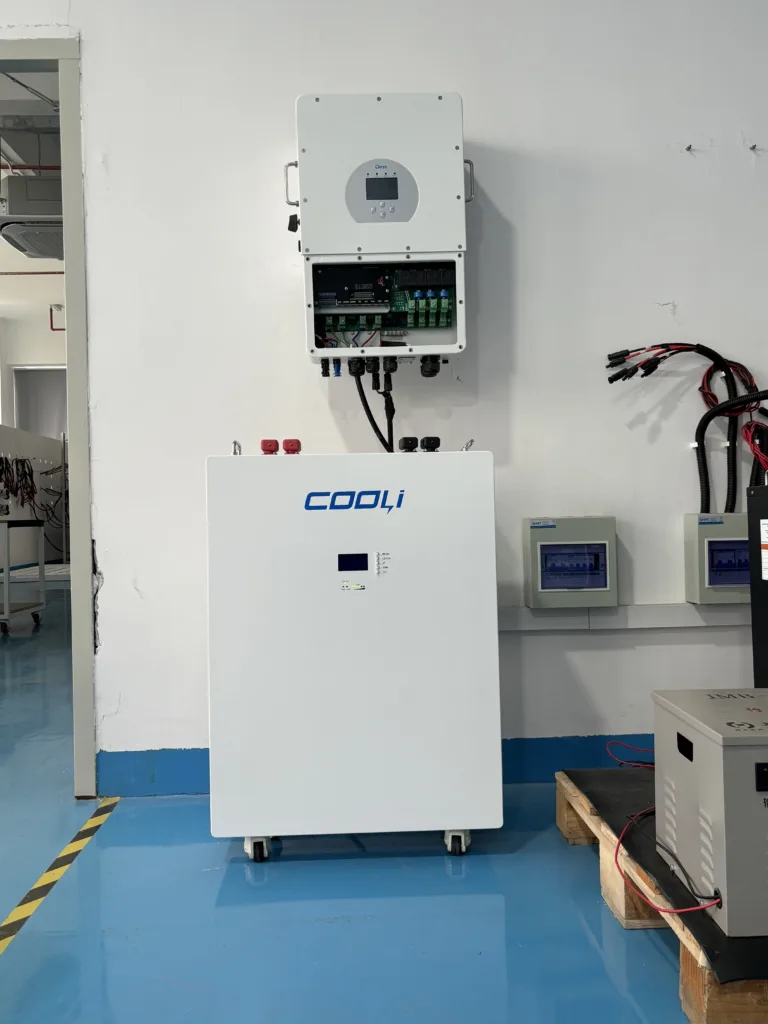How to Calculate Solar Battery Capacity? 3 Steps to Perfect Sizing
(A Practical Guide for African Homes and Businesses, with a Focus on South Africa)
Matching Solar Battery Capacity to Load-Shedding Schedules in Africa
In regions like South Africa and other parts of Africa, frequent power outages and unreliable grid electricity make solar energy systems a lifeline for homes and businesses. A critical component of any solar setup is the battery, which stores energy for use when the sun isn’t shining. However, choosing the wrong battery capacity can lead to wasted money, insufficient power, or shortened battery life.
This guide breaks down the process of calculating solar battery capacity into three simple steps, tailored to Africa’s unique energy needs, climate, and solar potential.

Step 1: Determine Your Daily Energy Consumption
Before sizing your battery, you need to know how much energy your household or business uses daily.
- List all electrical appliances you plan to power with solar.
- Typical appliances in African households: LED lights (5–10W), refrigerators (100–200W), TVs (50–100W), fans (50W), mobile chargers (10W), and small water pumps (200–500W).
- For businesses: Computers, routers, security cameras, or machinery.
- Calculate daily energy use (in watt-hours, Wh):
- Power (W) × Hours of use per day = Daily energy per appliance.
- Example:
- 5 LED lights (10W each) × 6 hours = 300 Wh
- Refrigerator (150W) × 24 hours (cycles on/off) ≈ 900 Wh
- TV (80W) × 4 hours = 320 Wh
- Total daily energy = 300 + 900 + 320 = 1,520 Wh (1.52 kWh)
- Factor in inefficiencies:
- Solar systems lose energy due to inverter inefficiency (~10–20%) and battery charging/discharging losses (~10–15%).
- Multiply total daily energy by 1.3 (30% buffer):
- 1.52 kWh × 1.3 = ~2 kWh per day.
Step 2: Calculate Battery Capacity Based on Autonomy Days
Battery capacity depends on how many days you need backup power (autonomy days). In South Africa, where load-shedding is common, 2–3 days of autonomy is practical.
1.Formula:
Battery Capacity (kWh)=Daily Energy (kWh)×Autonomy Days
- Example: For 2 days of autonomy:
2 kWh/day×2 days=4 kWh
2.Convert kWh to Amp-Hours (Ah):
- Batteries are rated in Ah at a specific voltage (e.g., 12V, 24V, 48V).
- Formula:

- Example: For a 48V system:

3.Factor in Depth of Discharge (DoD):
- Most batteries (e.g., lithium-ion) should not discharge below 80–90% DoD. Lead-acid batteries are limited to 50% DoD.
- Adjust capacity:

- Example: For lithium-ion (90% DoD):

Step 3: Match Battery Capacity to Solar Panel Output
Your battery must align with your solar panel array’s charging capability.
- Check daily solar generation:
- South Africa averages 4–6 peak sun hours daily (varies by season).
- Formula:Solar Panel Output (Wh)=Panel Wattage×Sun HoursSolar Panel Output (Wh)=Panel Wattage×Sun Hours
- Example: 400W panels × 5 sun hours = 2,000 Wh (2 kWh).
- Ensure panels can recharge the battery:
- Daily solar generation should exceed daily energy use.
- Example: If you use 2 kWh/day and generate 2 kWh/day, you’ll need extra capacity for cloudy days.
- Account for system expansion:
- Add 20–30% extra battery capacity for future needs (e.g., adding appliances).
Key Considerations for African Users
- Battery Type:
- Lithium-ion: Longer lifespan (10+ years), higher DoD (90%), but costly.
- Lead-acid: Cheaper but shorter lifespan (3–5 years) and lower DoD (50%).
- Temperature:
- High temperatures (common in Africa) reduce battery efficiency. Install batteries in shaded, ventilated areas.
- Local Support:
- Choose brands with service centers in your region (e.g., Huawei, Victron Energy, or local suppliers).
Example Calculation for a South African Household
- Appliances: 10 lights (100W total), fridge (150W), TV (80W), fan (50W).
- Daily energy: 1.5 kWh + 30% buffer = 1.95 kWh.
- Autonomy: 2 days → 3.9 kWh.
- Battery voltage: 48V → 3.9 kWh × 1,000 / 48V = 81.25 Ah.
- Lithium-ion (90% DoD): 81.25 Ah / 0.9 ≈ 90 Ah.
- Recommended battery: 100 Ah lithium-ion (48V).
Final Tips
- Use a solar calculator tool for precision.
- Consult local installers to validate your design.
- Prioritize energy-efficient appliances to reduce battery size and cost.
By following these steps, you’ll ensure your solar battery system meets your needs, survives load-shedding, and withstands Africa’s climate. 🌞🔋
Further Reading:
- [The Ultimate Guide to 48V 100Ah Lithium Battery Wall Mounted: Answering 5 Key FAQs]
- [48V 200Ah Solar Battery Uganda: Solve Outages & Save Costs]
5kWh LiFePO4 Battery in Vietnam 10kWh Energy Storage Solutions for Yemen 10kWh Solar Battery Costs in Myanmar 10kW solar system cost 15kWh Solar Battery 24V vs 48V Lithium Battery 25kWh Battery Systems 48V 300Ah kWh 51.2V 200Ah 10kWh Battery 150kW Solar System 300Ah 51.2V Floor Standing Battery 300Ah LiFePO4 battery Battery IP Ratings battery manufacturer in China Best Lithium Battery in Pakistan Cheapest Home Battery China’s Top Battery Manufacturer Custom Lithium Batteries Depth of Discharge (DoD) energy storage battery Global Lithium Battery Leaders Grade A Battery home energy storage Home Energy Storage Batteries Lead-Acid Battery Lead-Acid to Lithium LiFePO4 batteries LiFePO4 Batteries in Australia LiFePO4 Batteries in the Philippines LifePo4 battery LifePO4 Battery Technology LiFePO4 Battery vs. Lithium-Ion LiFePO4 disadvantages Lithium Batteries in Solar Systems Lithium Battery Manufacturer Lithium Battery Safety Tips lithium ion battery Market Trends Mejor batería para hogar España 2025 Off grid solar system Philippines Solar Batteries in Syria Solar Panel solar system Wall-Mounted Battery Wall vs Rack Batteries


![[Guia 2025]Bateria Solar no Brasil: 72% de Economia + Luz 24h! 🔋 此图片的 alt 属性为空;文件名为 image-31-png.webp](https://coolithium.com/wp-content/uploads/2025/04/image-32.webp)





Un comentario